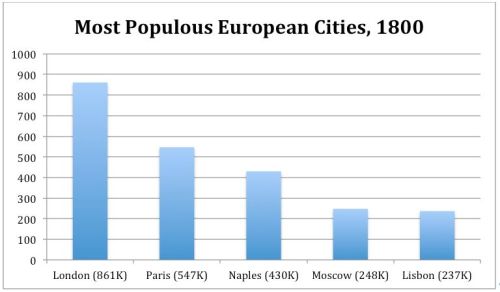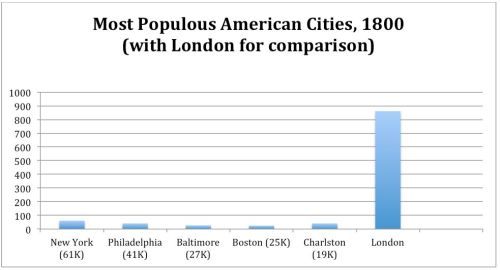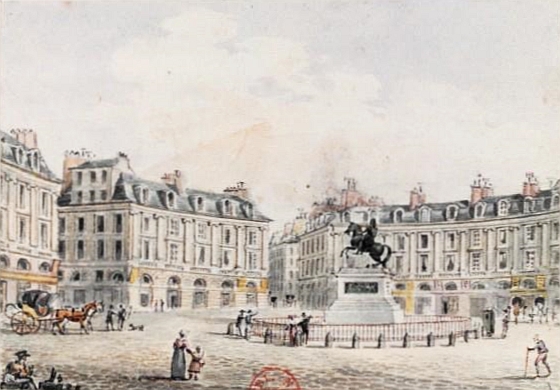One question that my early test readers of The Ambitious Madame Bonaparte asked me was why Betsy wanted to live in Europe so badly. What did she have against her own country?
In our current time period, when the United States is the most powerful country in the world and U.S. culture is a dominant global force, it’s hard to realize what the country was like two hundred years ago. The difference between living in an American city and living in a European capital was like the difference we’d experience between living in small-town Wisconsin and Chicago.
Look at the two graphs below, which I created using statistics I found on the Internet.
To further drive home the difference, here is an image of Paris in the early 1800s:
Place des Victoires by Victor-Jean Nicolle, via Wikimedia Commons
And here is the description I wrote in the novel of Washington, D.C., in 1804:
The next day, Aunt Nancy took Betsy and Jerome on a carriage tour. After Congress had decided in 1790 to build the nation’s capital in a newly created federal district, President Washington commissioned civil engineer Pierre Charles L’Enfant to devise a plan. Originally from France, L’Enfant wanted to construct a city in the European style with important buildings set far apart to allow for public gardens and plazas. At the time of Betsy and Jerome’s visit, the wide spaces between public buildings were occupied by a mix of uncleared land, small plots with cabins, and recently built houses—giving the city of Washington the disconcerting appearance of a sparsely settled wilderness with a few grandiose structures set down at random. Stories abounded of Congressmen going squirrel hunting within the city or getting mired in a swamp as they drove to their quarters at night.
Betsy was clever, ambitious, and interested in art and literature. Is it any wonder she wanted to be in Europe where the action was?






Makes sense to me!
Even if she didn’t want to live there, there’s always talk in books “of a certain period” of people going to the Continent to tour or whatever (I’m trying to remember the phrasing from Little Women, when Amy went. Not quite the same time period, I do apologize, but I think some of the same attitude.)
No need to apologize. You’re right about the attitude later in the century. One of the interesting things about Betsy is that she was one of the first American women to openly display such an attitude and one of the first to gain international celebrity. At the beginning of the century, the United States was still very young, and there was a lot of pressure on women to be good republican mothers (as in civics, not the political party). Their main duty was thought to be raising patriotic citizens. Betsy’s mother bore at least 13 children that we know of. Betsy wanted something different, and her American contemporaries had a hard time with that. Hmmm. I think I just found the idea for another blog post. 🙂
It does make sense! I love those graphs, by the way. Paris and London were definitely the places to be. 🙂 Great descriptive work up there, too.
Thanks! It’s really astonishing to me that London was 32 times larger than Betsy’s hometown of Baltimore. And Paris was about 16 times larger. I had fun in the novel describing her first reactions to both cities. Oh, and to Lisbon too.
That’s so fascinating. I didn’t realize that the populations were that drastically different. America was still new, agricultural and a backwater then. Of course a girl who was interested in culture and in fashion would look to Paris and London.
Hi Michelle. Thanks for stopping by. It is a stunning difference, isn’t it? I’ve worked on history textbooks for years, but I never realized how big the gap was until I worked on this novel.